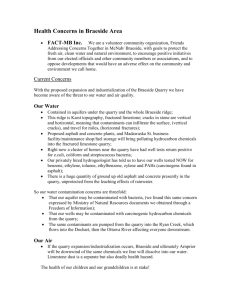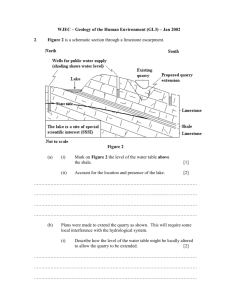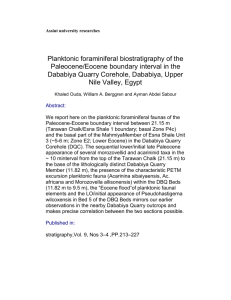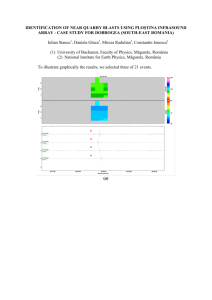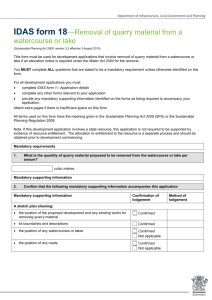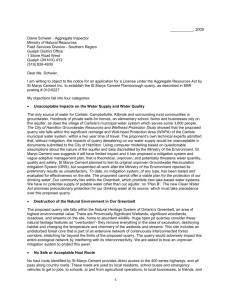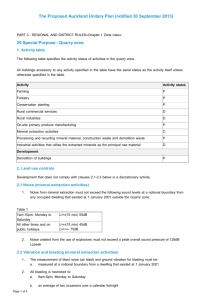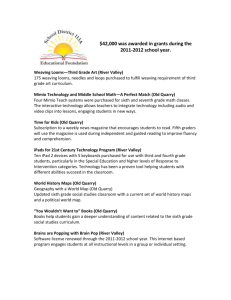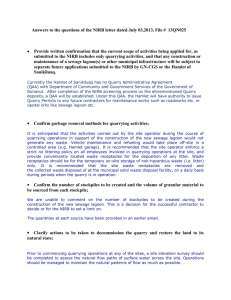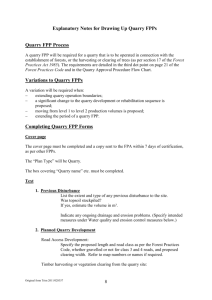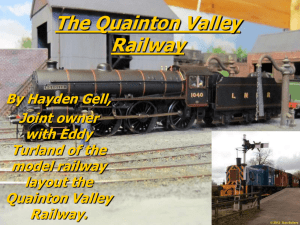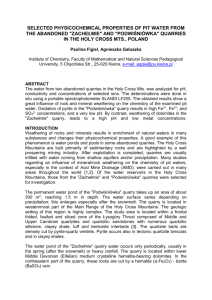Braeside Ground Water Summary - FACT-MB
advertisement
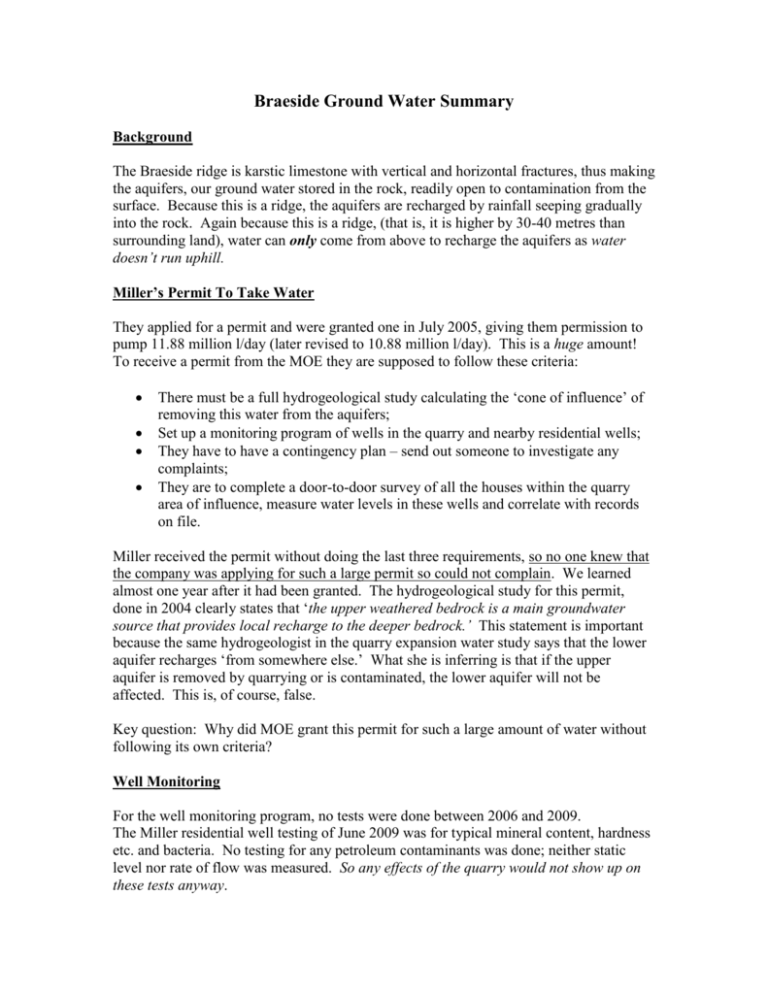
Braeside Ground Water Summary Background The Braeside ridge is karstic limestone with vertical and horizontal fractures, thus making the aquifers, our ground water stored in the rock, readily open to contamination from the surface. Because this is a ridge, the aquifers are recharged by rainfall seeping gradually into the rock. Again because this is a ridge, (that is, it is higher by 30-40 metres than surrounding land), water can only come from above to recharge the aquifers as water doesn’t run uphill. Miller’s Permit To Take Water They applied for a permit and were granted one in July 2005, giving them permission to pump 11.88 million l/day (later revised to 10.88 million l/day). This is a huge amount! To receive a permit from the MOE they are supposed to follow these criteria: There must be a full hydrogeological study calculating the ‘cone of influence’ of removing this water from the aquifers; Set up a monitoring program of wells in the quarry and nearby residential wells; They have to have a contingency plan – send out someone to investigate any complaints; They are to complete a door-to-door survey of all the houses within the quarry area of influence, measure water levels in these wells and correlate with records on file. Miller received the permit without doing the last three requirements, so no one knew that the company was applying for such a large permit so could not complain. We learned almost one year after it had been granted. The hydrogeological study for this permit, done in 2004 clearly states that ‘the upper weathered bedrock is a main groundwater source that provides local recharge to the deeper bedrock.’ This statement is important because the same hydrogeologist in the quarry expansion water study says that the lower aquifer recharges ‘from somewhere else.’ What she is inferring is that if the upper aquifer is removed by quarrying or is contaminated, the lower aquifer will not be affected. This is, of course, false. Key question: Why did MOE grant this permit for such a large amount of water without following its own criteria? Well Monitoring For the well monitoring program, no tests were done between 2006 and 2009. The Miller residential well testing of June 2009 was for typical mineral content, hardness etc. and bacteria. No testing for any petroleum contaminants was done; neither static level nor rate of flow was measured. So any effects of the quarry would not show up on these tests anyway. Expansion Studies These were so flawed that the peer reviewers who usually just rubberstamp the studies, required the scientists to drill more wells, make more calculations and rewrite the studies. These studies are not available yet. No matter how much more data they prepare they can’t escape the truth that water doesn’t run uphill. They say the quarry will have no impact on neighbouring wells; this just isn’t true. Groundwater Quantity GRI, Millers’ hydrogeologists did not do a water balance calculating how much water might be contained in this area of the ridge, so it is not known how much of the natural recharge, rain and snow, is being used by the quarry and domestic wells. Our hydrogeologist estimated that there might be about 600 million l/year of water available. If the quarry expands, more than half of that will be gone. If the quarry goes deeper much more will be lost. There will not be enough water is the ridge for domestic wells and quarry pumping! Groundwater Quality There are two main concerns here: Bacterial contamination – this has already happened in a widely occurring number of wells. MNR knew of bacterial contamination a number of years ago, wondering if the aquifer were contaminated. They did nothing and told no one. Hydrocarbon contamination, (cancer-causing petroleum based chemicals) – very probable because of the large pile of used asphalt/concrete in the quarry and the normal spills of an industry using heavy machinery and trucks. Add to this a temporary or permanent asphalt plant and you have water you could never use. Emissions from the plants would dissolve in rain, fall to the quarry floor and infiltrate the aquifers. If the Ontario Government is serious about groundwater protection, as their rhetoric states, then they should take our concerns seriously and conduct a complete Environmental Assessment of the area to find the sources of the problem before any further development occurs.
